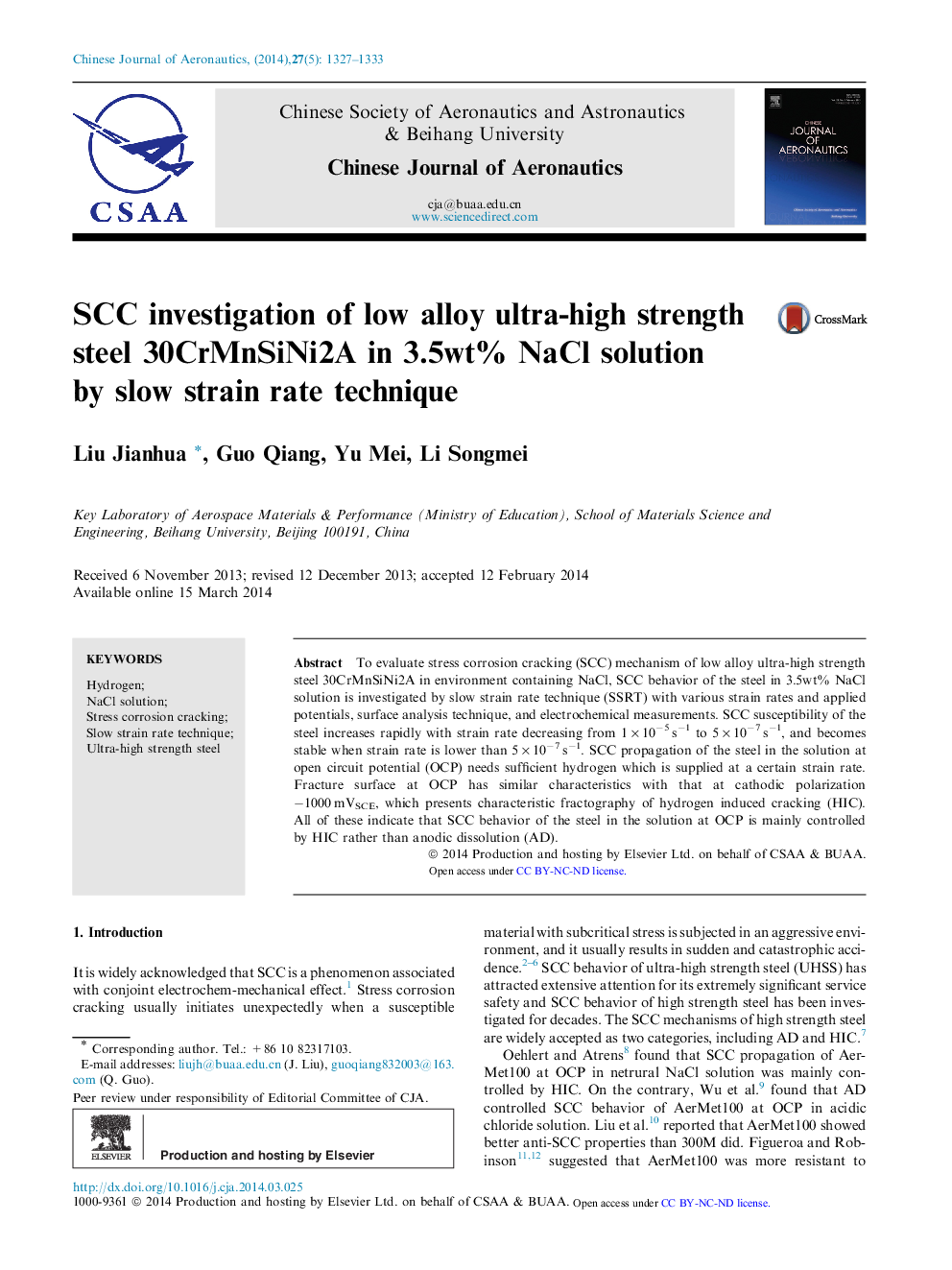| Article ID | Journal | Published Year | Pages | File Type |
|---|---|---|---|---|
| 765907 | Chinese Journal of Aeronautics | 2014 | 7 Pages |
To evaluate stress corrosion cracking (SCC) mechanism of low alloy ultra-high strength steel 30CrMnSiNi2A in environment containing NaCl, SCC behavior of the steel in 3.5wt% NaCl solution is investigated by slow strain rate technique (SSRT) with various strain rates and applied potentials, surface analysis technique, and electrochemical measurements. SCC susceptibility of the steel increases rapidly with strain rate decreasing from 1 × 10−5 s−1 to 5 × 10−7 s−1, and becomes stable when strain rate is lower than 5 × 10−7 s−1. SCC propagation of the steel in the solution at open circuit potential (OCP) needs sufficient hydrogen which is supplied at a certain strain rate. Fracture surface at OCP has similar characteristics with that at cathodic polarization −1000 mVSCE, which presents characteristic fractography of hydrogen induced cracking (HIC). All of these indicate that SCC behavior of the steel in the solution at OCP is mainly controlled by HIC rather than anodic dissolution (AD).
